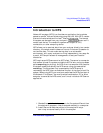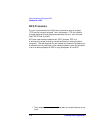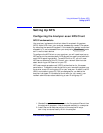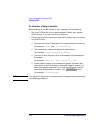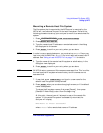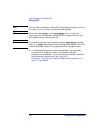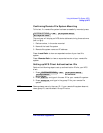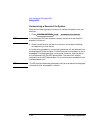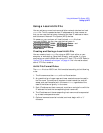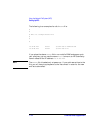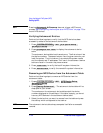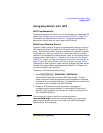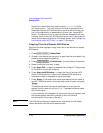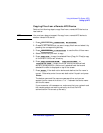
LAN Interface Supplement 7-11
Using the Network File System (NFS)
Setting Up NFS
Using a Local HOSTS File
You can add one or more host names of other network devices to a local
HOSTS file. This file associates host IP addresses with host names, so
that you can use the host name instead of the host IP address to mount
and automount Network File System (NFS) devices.
On powerup, your analyzer will load the local HOSTS file from
non-volatile RAM. You can then use the host name in
and
.
Creating and Saving a Local HOSTS File
You can create a local HOSTS file using an ASCII text editor on your
computer or workstation. Save the file locally, and transfer it to your
analyzer’s non-volatile RAM disk using a 3.5” disk, FTP or NFS. Refer to
“Using FTP to Access the Analyzer” on page 4-3 for information about
disk or FTP file transfers.
HOSTS File Format Rules
The HOSTS file is an ASCII text file formatted according to the following
rules:
1. The file name must be HOSTS, with no file extension.
2. Any combination of upper case and lower case letters can be used in
the file name. The analyzer file system is case-insensitive, and will
accept and use files saved with the name HOSTS, regardless of the
case of the letters originally in the name.
3. Each IP address and host name pair must be on a single line with the
IP address first and the corresponding host name next.
4. The IP address and the corresponding host name must be separated
by at least one space character.
5. Optional comments can be included, and must begin with a “#”
character.
SYSTEM OPTIONS
LAN
NFS Device Setup
Dvice Setup
SYSTEM OPTIONS
LAN
NFS Device Setup
Dvice Setup
Automount Dev Setup
Dvice Setup



